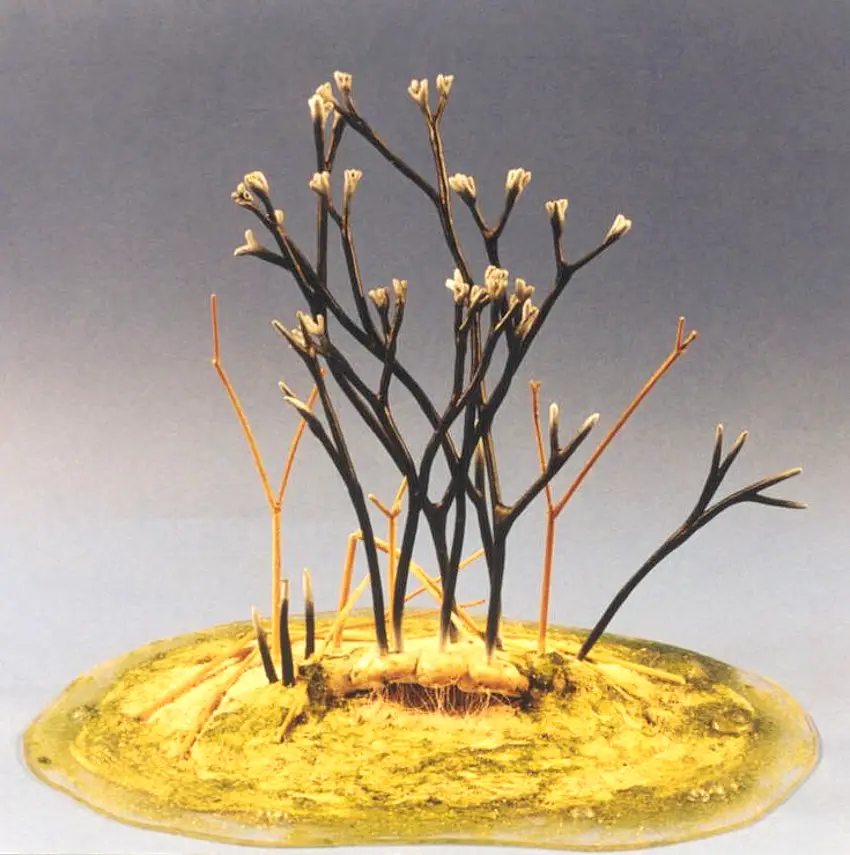Contents
CLASSIFICATION OF HORNEOPHYTON LIGNIERI
Kingdom :- Plantae
Division :- Pteridophyta
Sub-division :- Psilophytopsida
Class :- Rhyniopsida
Order :- Rhyniales
Family :- Rhyniaceae
Genus :- Horneophyton
Study of the external features of the reconstructed plant
- Homeophyton with one species H. lignieri was found with Rhynia in the Rhynichert bed of Aberdeenshire, Scotland. It was previously named as Homeo.
- The rhizome was a lobed parenchymatous body bearing non-septate rhizoids but with no continuous vascular strand of its own
- The rhizome gave rise to upright shoots which ranged from 1 to 2 mm. in diameter and were dichotomously branched.
- Sporangia were borne on the tips of these branches and were 1 to 2 mm in diameter and 2 or more mm in length.
STUDY THE FOSSIL SLIDE OF L.S. OF SPORANGIUM
- The sporangium was oval or slightly cylindrical spore sac, somewhat pointed distally.
- The sporangial wall consisted of a cuticularised epidermis followed by several layers of thin walled cells. The innermost layer was a well defined tapetum.
- The most striking feature was the presence of central columella projecting into the spore cavity from the base. The columella was continuous with the phloem of the main stem.
- Surrounding the columella and within the sporangial wall were many spores.
- The spores were about 50 m in diameter and occur as tetrads.
IDENTIFICATION OF HORNEOPHYTON LIGNIERI
- DIVISION – Pteridophyta
- True roots generally present (except in Psilopsida),
- True vascular strand present.
- Sub-division:- Psilophytopsida
- True roots absent.
- Shoot differentiated into subterranean rhizome and apical portion.
- Sporangia borne terminally.
- Order– Psilophytales
- Sporophyte dichotomously branched.
- Sporangia generally borne singly.
- Family – Rhyniaceae
- Rhizoids unicellular, on rhizomes.
- Aerial portion leafless.
- Genus – Horneophyton
- Rhizome-a lobed parenchymatous body
- Rhizome without a continuous vascular strand of its own
- Presence of columella in the sporanigum.
REFERENCES
- https://alchetron.com/Horneophyton
- Text book of practical :- botany


Leave a Reply